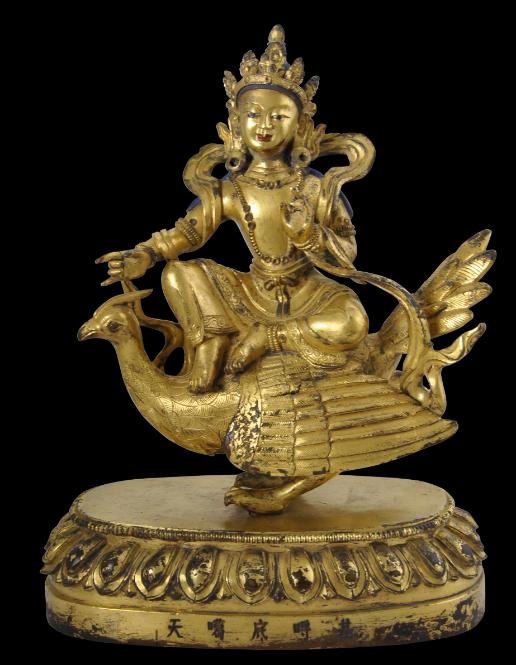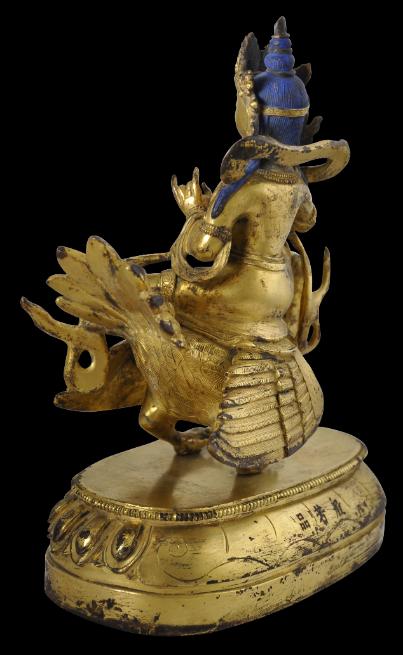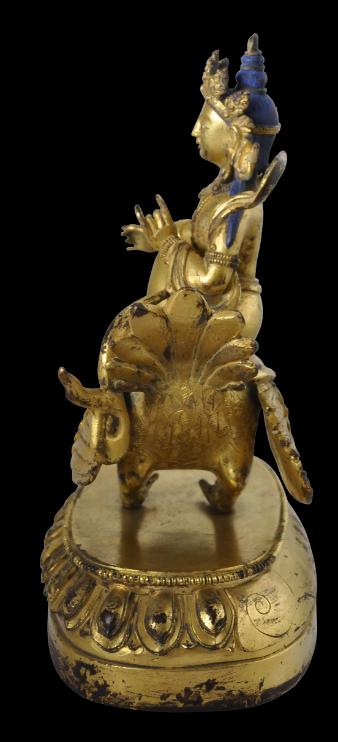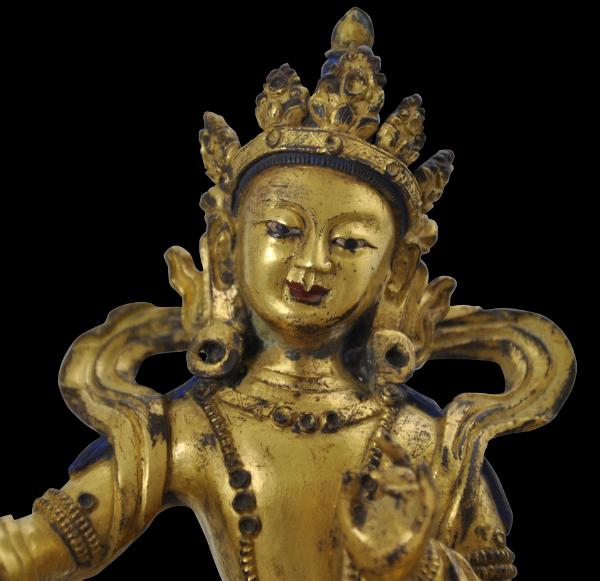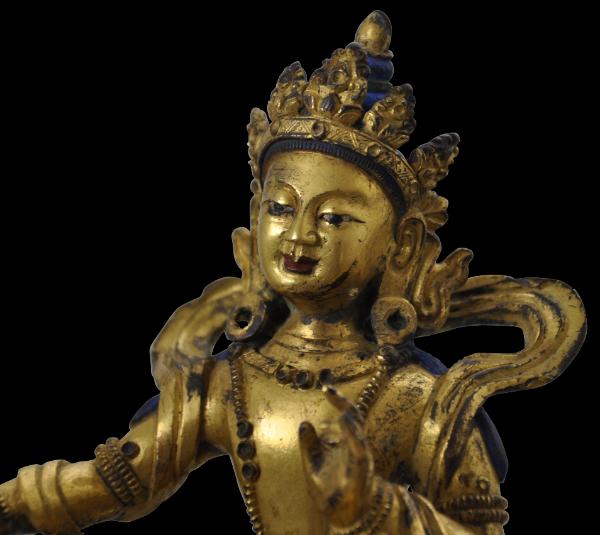
Sino-Tibetan Gilded Bronze Image of Mahamayuri
Gilded Bronze Image of Mahamayuri
Sino-Tibetan
late 18th-19th century
height: 22.8cm, width: 17cm, depth: 10.3cm, weight: 2,773g
This unusual, fine, gilded (gold-plated) bronze shows Mahamayuri astride a celestial peacock. Mahamayuri is one of the five Maharaksas (protective goddesses) and is associated particularly with the Kagyu tradition, one the six main schools (chos lugs) of Himalayan or Tibetan Buddhism. Mahamayuri is a peaceful personification, in contrast to the wrathful attitudes of male personifications of the Wisdom Kings. Mahamayuri is credited with the power to protect followers from poisoning, either physical or spiritual.
This example of the goddess probably was produced in China or eastern Tibet, for the Sino-Tibetan market. The goddess is seated on a peacock which is attached to an oval base that has a broad border of prominent lotus petals.
The base also has what appears to be a Chinese mantra engraved to the front and another engraved at the back, or this might be the local names for the deity.
The front is engraved thus:
天 噶 底 哷 基
or ‘Tian Ga Di Lie Ji’.
The reverse is inscribed thus:
般 若 品
or ‘Bo Re Pin’ where
般 若
usually means ‘Wisdom’ or more precisely ‘Buddhist Wisdom’. This is a reference to the deity’s status as one of the Wisdom Kings.
The goddess has a very well-cast face with fine features and coloured eyes and lips. The hair is coloured with blue, which provides a beautiful contrast of the surrounding gold.
The goddess wears a high Himalayan crown of five points, and ample other jewellery. A ribbon rises from behind her right shoulder, twists around her right arm, runs around the back of the head, falls over the left shoulder and over the left arm and down to the peacock’s wing.
The form – Mahamayuri being depicted astride a peacock – appears to follow Tibetan depictions of Brahma on his celestial vehicle, a goose. Brahma is strongly associated with Hinduism but is something of a ‘cross-over’ god, having been absorbed into some strands of Buddhism. Brahma is sometimes depicted in stories of the Buddha’s birth for example. Kerin (2009, p. 48) illustrates a gilded bronze image of Brahma astride a goose, attributed to 17th-18th century Tibet.
The bronze here is in an excellent condition. There is minor, age-related wear to the gilding, but no other losses. The base plate and hence the consecration no longer is present.
References
Kerin, M.R., Artful Beneficence: Selections from the David R. Nalin Himalayan Art Collection, Rubin Museum of Art, 2009.
Provenance
UK art market
Inventory no.: 3842
SOLD

